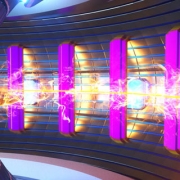Don’t delay: Leading solar manufacturer urges installers to take up PV training as demand surges
A leading solar photovoltaics (PV) and energy storage solutions manufacturer is calling on both non-PV installers and existing solar contractors to invest in training, with interest in solar predicted to soar as a result of the as the Energy Price Guarantee (EPG) increase.
Although the current EPG has been announced to stay at £2,500 for a further three months before increasing to £3,000 in July, solar is already seeing unprecedented levels of interest from homeowners and landlords. One energy firm, Good Energy, found that solar installations doubled to over 130,000 in 2022.
Now, GoodWe is urging tradespeople to start skilling up in solar today to take meet this growing demand and is launching a series of training sessions to help tradespeople add PV to their services.
The free-to-attend training sessions are part of the company’s GoodWe PLUS+ Installer Programme. Hosted online by a GoodWe technical specialist, the series is run in three separate parts, and is designed to help installers from design and installation, through to commissioning and aftermarket servicing. The programme consists of the following modules:
- Portfolio and Application – 9th May 2023.
- Commissioning and Monitoring – 11th May 2023
- Troubleshooting and Service – 16th May 2023
Eugene Lucarelli, Marketing Manager for GoodWe UK, said:
“Over the past year, we have seen the solar industry skyrocket. Rising energy prices have pushed people to look at futureproofing their energy supply and protect themselves from volatile, expensive grid costs.
“It represents a great opportunity for tradespeople like electricians and roofers, who may already have a slight connection with solar, to really step into the industry and add PV to their portfolio. We’re here to enable this through our easy-to-access training seminars in May, hosted by one of our leading technical representatives.
“The webinars themselves help break down everything an installer would need to know about solar solutions. It’s also a great refresher course for existing solar installers, and by going through the training sessions, you can become an accredited GoodWe PLUS+ installer and unlock other benefits from us too, including additional warranty on our residential inverters.”
As well as training installers on the core elements of a solar system solution – inverters and batteries – delegates can also learn about complementary products, such as EV chargers. These products are becoming increasingly popular and are a requisite for certain new builds under Part S of the Building Regulations – Infrastructure for the charging of electric vehicles.
Accredited GoodWe PLUS+ installers will benefit from an extended ten-year warranty on GoodWe’s range of string inverters for residential applications. Once training has been completed, all installers need to do is register for an installer code for GoodWe’s monitoring solution, SEMS, install an inverter and then connect the inverter to SEMS.
For more about the GoodWe PLUS+ programme and to sign up to the training, please visit https://emea.goodwe.com/












